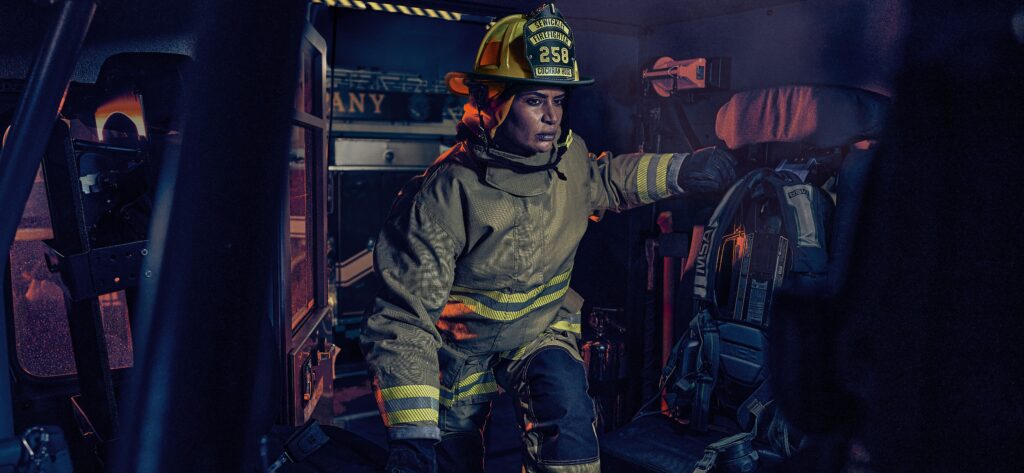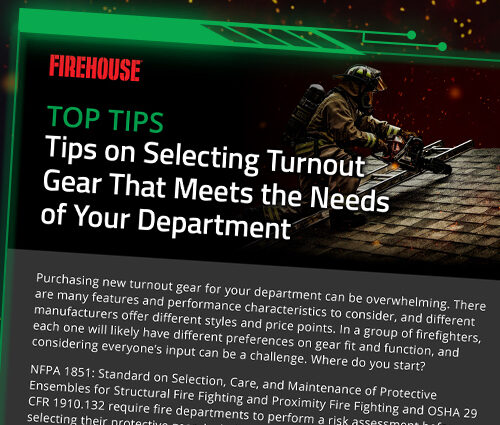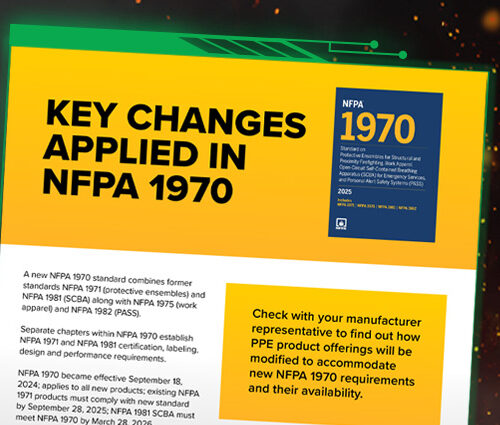
In an interview published by NFPA Journal® in 2021, Dr. Meredith McQuerry, a Florida State University professor and expert in clothing comfort physiology, said female firefighters have a 33% higher risk of on-duty injury than their male counterparts.1 She stated that ill-fitting PPE plays a role in that greater risk of injury because female firefighters are “not able to move as easily or as quickly as they need to” while wearing gear designed for male proportions.
NFPA Requirements
Proper fit is such an important aspect of personal protective equipment (PPE) performance that it is included in the NFPA 1971 part of NFPA 1970, Standard on Protective Ensembles for Structural Fire Fighting and Proximity Fire Fighting. The standard requires that manufacturers offer women-specific patterns and sizes for their turnout gear to include a full range of women’s sizes with grading for each size.
Pattern grading is the process of creating multiple sizes while maintaining the original design’s style and proportions. For women’s turnout gear this is addressed through sleeve and inseam length, shoulder to wrist length, and hip to ankle length. Pattern grading enables each garment size to fit a wider range of body shapes and sizes, and be comfortable to wear and work in.
NFPA 1500, Standard on Fire Department Occupational Safety, Health, and Wellness Program, specifies that gear should be sized to individuals, to help ensure a proper fit. The standard also considers factors such as gear overlap and range of motion to help improve firefighter safety and movement efficiency.
Turnout Gear Design Considerations
Well-designed garments and accurate sizing allow female firefighters to perform at the fire scene just like their male counterparts – without undue mobility restrictions or energy depletion.
In general, women firefighters typically have narrower shoulders and torso, yet they need a turnout jacket that flares to accommodate the hips. Female firefighters may have a 12” difference from waist to hip compared to a 6” difference for male firefighters, requiring specifically designed turnout pant patterns that enhance mobility.
Another important consideration in the design of gear for women is to gather feedback about their experiences with turnout gear, their preferences, and their needs – not only during research and development but on an ongoing basis. The goal is for manufacturers to use that information and insights to improve the design of their product offerings.

Get Help With Grant Funding for Turnout Gear
MSA partners with FireGrantsHelp to assist you in finding the right grants that can be used to purchase turnout gear and developing a successful grant application.
REGISTER NOWGlobe® Gear Facts
- For more than 20 years, Globe has offered turnout gear built with women-specific patterns – since the requirement was added to the NFPA 1971 Standard, 2000 Edition.
- Globe turnout gear utilizes women’s garment patterns specifically designed with the typical proportions of the female body in mind, rather than “scaled down” men’s patterns. Women’s patterns are designed to accommodate narrower shoulders and torso, shorter sleeves, and different jacket lengths.
- Globe turnout gear offers a range of women’s sizes across jacket and pant styles, including jacket length and waist, inseam, and hip sizes for pants.
- Globe boots come in an extended range of women’s sizes in narrow, medium, wide, and x-wide widths with wide calf models available.
- Of course, some female firefighters may ultimately opt for a men’s pattern in turnout gear, or a mix and match, if those turnout garments better align with their unique proportions.
As the diversity of fire departments and their leadership continues to evolve, PPE must be designed to fit every firefighter to provide better protection and performance on the fireground.
Sources:







